INDIAN ARMED FORCES CHIEFS ON OUR RELENTLESS AND FOCUSED PUBLISHING EFFORTS

The insightful articles, inspiring narrations and analytical perspectives presented by the Editorial Team, establish an alluring connect with the reader. My compliments and best wishes to SP Guide Publications.

"Over the past 60 years, the growth of SP Guide Publications has mirrored the rising stature of Indian Navy. Its well-researched and informative magazines on Defence and Aerospace sector have served to shape an educated opinion of our military personnel, policy makers and the public alike. I wish SP's Publication team continued success, fair winds and following seas in all future endeavour!"

Since, its inception in 1964, SP Guide Publications has consistently demonstrated commitment to high-quality journalism in the aerospace and defence sectors, earning a well-deserved reputation as Asia's largest media house in this domain. I wish SP Guide Publications continued success in its pursuit of excellence.
- Operation Sindoor: Resolute yet Restrained
- India’s Operation Sindoor Sends a Clear Message to Terror and the World – ‘ZERO TOLERANCE’
- Japan and India set forth a defence cooperation consultancy framework, talks on tank and jet engines
- Terrorist Attack in Pahalgam in Kashmir: Unfolding a long surgical war against PAK
- Lt General Pratik Sharma takes over Command of Indian Army's Northern Command
Chinese Incursions in Indian Territory
 |
By Lt General V.K. Kapoor (Retd) |
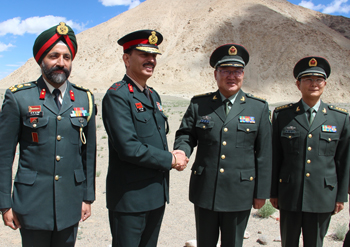
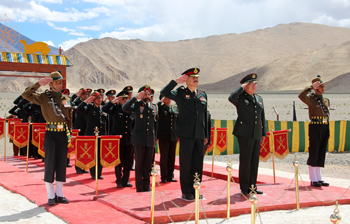
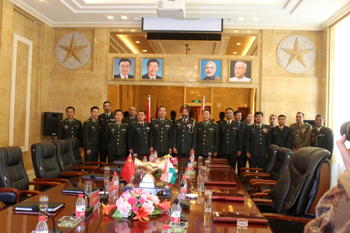
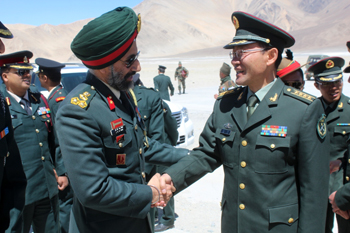
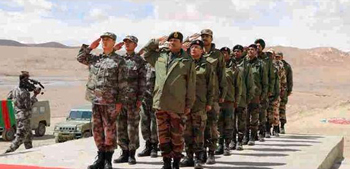
Border Agreements with India
China is in illegal occupation of 38,000 square kilometres of Indian Territory in Ladakh mainly Aksai Chin and Shaksgam Valley. Chinese claim lines have also been expanding over the years. In Arunachal it claims 90,000 square kilometres Indian territory. China expanded its claim to include the entire Arunachal Pradesh, as late as 2005, calling it South Tibet. This move by China is highly is irrational and illogical from the Indian point of view. However if we add the periodic intrusions across the line of actual control (LAC) then the Chinese intention to keep alive their claims by constantly intruding in to our territory for a settlement advantageous to them later on becomes clear. Seeing the situation on the ground and to ensure peace and tranquillity on the border, various border agreements were signed by both the countries. Maintenance of Peace and Tranquility Along the Line of Actual Control in the India-China Border Areas was signed on 7th September 1993. Another agreement on Confidence Building Measures in the Military Field Along the Line of Actual Control in the India-China Border Areas was signed on 29 November 1996. This was followed by the Protocol on Modalities for the Implementation of Confidence Building Measures in the Military Field Along the Line of Actual Control in India-China Border Areas which was signed on 11th April 2005 and the Agreement on Establishment of a Working Mechanism for Consultation and Coordination on India-China Border Affairs was signed on 17th January 2012. Finally the Border Defence Cooperation Agreement was signed on 23 October 2013. Hence it may be noted that there are no dearth of Agreements between the two countries yet the incursions across the line of actual control (LAC) continue unabated.
Incursions across the LAC
The latest incident was reported on 11 September 2015 at Burtse in Ladakh which is in the Depsang plains at a height of 17,000 feet above sea level. The Indian troops destroyed a watch tower-like structure which consisted of a camera and solar-panel mounted on a hut's roof, built by the People's Liberation Army (PLA) on the "border patrolling line". This resulted in a face- off between the two forces and culminated in flag meetings between the rival commanders at border personnel meeting (BPM) points at Daulat Beg Oldi and Chushul from where the two sides decided to observe and maintain peace.
The two armies have operationalised five border personnel meeting points. Their fifth border personnel meeting (BPM) point at Daulat Beg Oldi added last month, connects to the existing ones at Chushul (Ladakh), Nathu La (Sikkim), Bum La and Kibithu (Arunachal).
Transgressions across the LAC are quite common in the three sectors of the 4,057km LAC namely western sector (Ladakh), central sector (Uttarakhand, Himachal) and eastern sector (Sikkim, Arunachal) due to aggressive patrolling conducted by both sides. However eastern Ladakh in particular has emerged as a major flashpoint in recent years.
The Depsang Valley has witnessed two major incidents in the past. The first incident was between the two armies in April-May 2013 after PLA troops had intruded 19km into Indian territory. The second incident involved a prolonged standoff, with around 1,000 soldiers from each side in an eyeball-to-eyeball confrontation at Chumar and Demchok, in September 2014.
Manifestation of the Larger Strategic Construct
Despite border stand-offs India and China are continuing conduct their military to military bi-lateral training exercises as a confidence-building measure between the two armies. The current exercise is likely to be held at Kunming in China from October 11 to 23. India has nominated a subunit of the famous Naga Regiment to match their combat skills with People's Liberation (PLA) troops there.
While a large number of incursions have taken place however no border skirmishes with actual firing have occurred and that has been avoided by quiet diplomacy. There is little doubt that both countries are guarded and watchful about the others actions at the border. Chinas aggressive posturing at the border, incursions across the LAC, increasing presence in the India ocean, increasing presence in POK are all being viewed by strategists as local manifestation of the larger strategic construct in the region such as the US attempt to rebalance it military forces in the Asia Pacific region and the visible attempts by China in enlarging its presence in the Indian ocean with submarines and warships over the past year. This activity together with their actions in POK to build a China-Pakistan Economic Corridor (CPEC), through Gilgit-Baltistan, have all resulted in making India more cautious and sensitive. However the vital part of this story is that it should have made the Indian government more sensitive to quick modernization of the Indian armed forces and to drastically improve the border infrastructure. However this does not seem to be happening with the speed that is essential. This is an area where mere rhetoric will be highly irresponsible and dangerous for the country’s territorial integrity in the long run.





